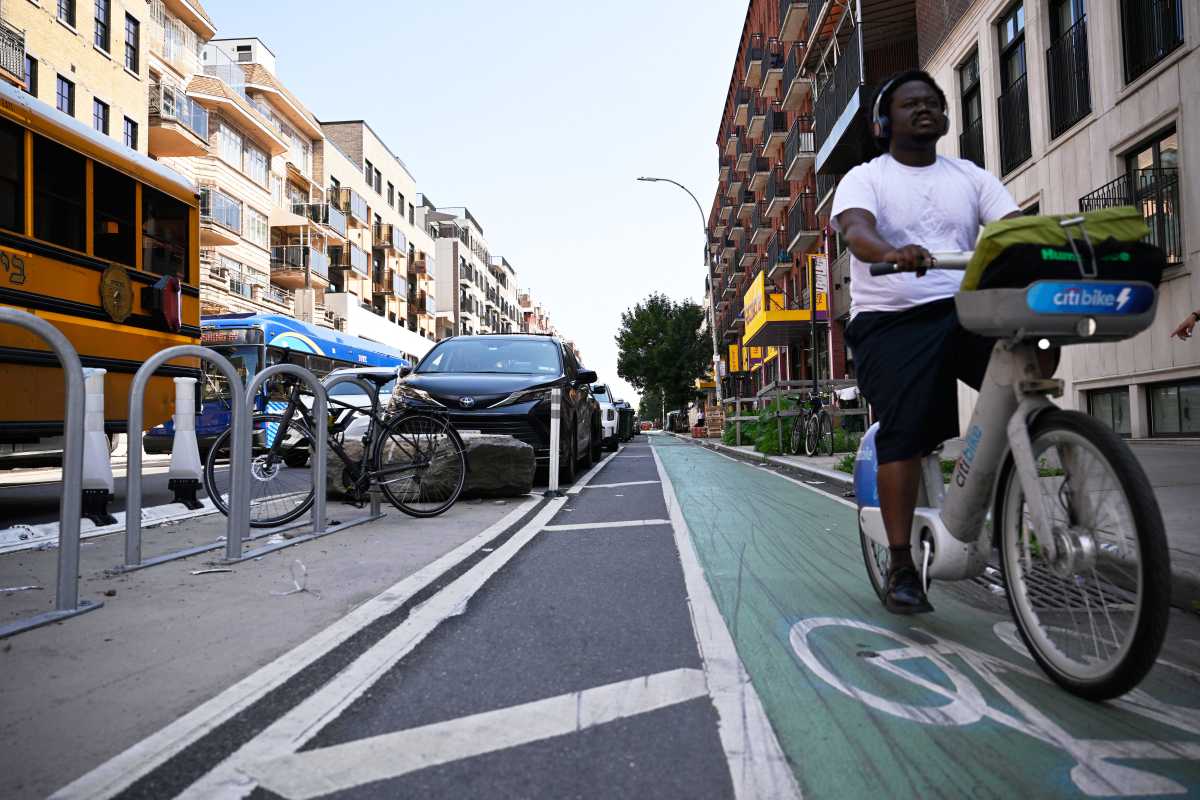Clear choice at Pier 40
To The Editor: Re “‘People’s Pier’ vs. Performing Arts Center for Pier 40” (news article, Dec. 27):
As a 42-year resident of Lower Manhattan/Chinatown, always involved in neighborhood issues, I appreciated your excellent article contrasting the proposed development of Pier 40 as a “glitzy Downtown Lincoln Center” with the low-impact, high-quality plans of The People’s Pier reconstruction that will serve New Yorkers as well as tourists. Deja vu all over again! The West Side Stadium, the Olympics and now Disneyland on the Hudson, a developer’s dream that will prove a nightmare to the neighborhoods served by The Villager.
Lincoln Center is a false analogy; destroying that neighborhood at least gave us over half a dozen world-class performance and film venues and music education facilities. It’s ludicrous to compare that complex to the proposed Cirque du Soleil theater, shop, restaurant, nightclub and V.I.P. lounge, “grand ballroom” for after-event parties, marina and “Beach Club.” And which tourists will be sitting outside in New York’s dreary November-to-mid-April weather watching a stilt walker? The ice rink a major tourist attraction? Highly unlikely to this ice skater, who always found the former World Trade Center rink empty. Four restaurants where a meal will cost a family a day’s wages? From the Village to Lower Manhattan, there’s already a panoply of restaurants.
Let’s note, too, that The People’s Pier does not exclude interesting dining venues, more public recreational space and activities than required and even a grand arena for hosting various major events. More important, New Yorkers need the innovative schools, camp and athletic facilities planned for Pier 40 by such experienced city foundations as Urban Dove and the other supporters mentioned. These are proven means of decreasing violence among and providing benefits for the city’s children, many of whom don’t have school gyms or ball fields.
We must trump the Trumpovisation of our beloved city. If they build it, we (the residents) may not come, but we won’t be able to undo it either. Their legacy will be desolate Pharaonic structures, a mall atmosphere with constant turnover of failed high-end businesses and a lone, bundled-up acrobat turning somersaults for a Siberian tour group.
Joan Gregg
Ground the Bird Lady
To The Editor: Re “Rain or shine, Chelsea Bird Lady tends to her flock” (news article, Dec. 27):
It was extremely irresponsible and misguided of you to publish a positive article about the Chelsea woman who feeds pigeons. She is actually feeding rats, who eat much of the food the pigeons miss.
Pigeons spread diseases. They cause allergies. Their droppings have acid that erodes the beautiful brownstone buildings lining Chelsea streets.
Feeding pigeons causes them to breed in artificially large numbers. Their population skyrockets to unsustainable numbers.
According to a recent article in The New York Times: “A pigeon dispenses about 25 pounds of excrement a year. Often this gunk must be blasted off hard-to-reach places using boom lifts and steam hoses. Pigeon-related damage in America has been estimated to cost $1.1 billion a year.”
The man who has done the most research on pigeon feeders, also quoted in The Times, is brutally honest:
“‘Most of the pigeon feeders are in some way crazy,’ he said, summarizing, rather informally, a psychological study he helped write on the subject. ‘It is impossible to influence these people. The most relentless have no family and few interpersonal relationships. They adopt pigeons as surrogate children.’”
We don’t need thousands of pounds of damaging, diseased bird poop in Chelsea. We don’t need anymore crazy “Bird Ladies.” Please try to be more responsible with your future reporting.
Nicole Feist
Don’t blame the pigeons
To The Editor: Re “Rain or Shine, Chelsea Bird Lady tends to her flock” (news article, Dec. 27):
Lawrence Lerner’s well-written feature about the Chelsea Bird Lady brings together the many various issues New Yorkers have about caring for and feeding pigeons. Let me start by first commending the Bird Lady’s good intentions. The city’s pigeons are routinely ridiculed and persecuted, and even poached and sold to rural gun clubs, where they are slaughtered by the thousands for live target practice.
It’s a strange fate for a bird that has been beloved by humanity for its gentle and loyal nature for the better part of 10,000 years. The Bird Lady is correct when she says that a million pigeons served in the two world wars and saved thousands of soldiers’ lives by delivering critical messages. This is a role, among others, that they have performed since the time of the ancient Egyptians, and, in many parts of the world, still do. It’s hard to imagine that the run-of-the-mill park-bench pigeon is related to war heroes, but it is. You might also be surprised to learn that the Queen of England is a pigeon fancier, as was Charles Darwin, Julius Reuters, Baron Rothschild and Iron Mike Tyson, too.
The Bird Lady is also correct when she states that pigeons are not disease-infested vermin. They carry no more diseases than you or I, and are highly resistant (if not immune) to avian flu and West Nile virus. But their droppings do accumulate and that’s neither a particularly healthy nor pretty sight. The problem with pigeons is not the bird — it’s a wonderful creature — it’s the number of them. And that’s where the Bird Lady is perhaps making a mistake.
Overfeeding of pigeons leads to overbreeding and overpopulation. It’s not a healthy state for the birds or us. I would encourage the Bird Lady to enjoy her winged friends and perhaps throw them a splash of birdseed — but no more. The reason the humane pigeon-control program in Europe works so well is that it discourages citizens from feeding pigeons except in designated areas where the birds’ eggs can be culled each week.
The Bird Lady and hard-working rehabbers, such as Rita McMahon, are certainly right about one thing: We need to learn to respect and coexist peacefully with the city’s animals. Wildlife can be inconvenient, but it can also animate our lives in unexpected and delightful ways.
But please don’t overfeed the pigeons. And consider lobbying the city to adopt the humane and effective form of pigeon control practiced throughout much of Europe.
Andrew D. Blechman Blechman is the author of “Pigeons — The Fascinating Saga of the World’s Most Revered and Reviled Bird” Punk and London geography
To The Editor: “Before Oi! there was Oy! Punk’s Jewish Roots” (news article, Dec. 27):
I loved Bonnie Rosenstock’s article on Jews in music, since it mentioned a lot of my musical heroes. But, since I live in London, can I just put one thing in perspective about its geography? Islington is in the N1 area of London, is pretty exclusive and has been for the last 40 years or so. Tony Blair has or had a house there and it’s home to many actors and people in the media; it boasts cafes, bookstores, designer couples with designer babies and some great pubs.
The real East End of London is around the areas of Whitechapel, Bethnal Green and Hackney. Being a descendant of Sephardic Jews who settled in that area, I’m fascinated by the cultural changes that have taken place in those areas and how each immigrating group left its mark. The crime for which these parts were so notorious in the ’50s ands ’60s — the Kray brothers and other gangs — is not just relegated to these places but is now part of the big city as a whole. Islington and crime were never synonymous, as were Hackney and crime, for example.
If in doubt, ask Lenny Kaye what he thinks. He’s a big fan of the soap “Eastenders.”
Barbara Lee-Jones

































